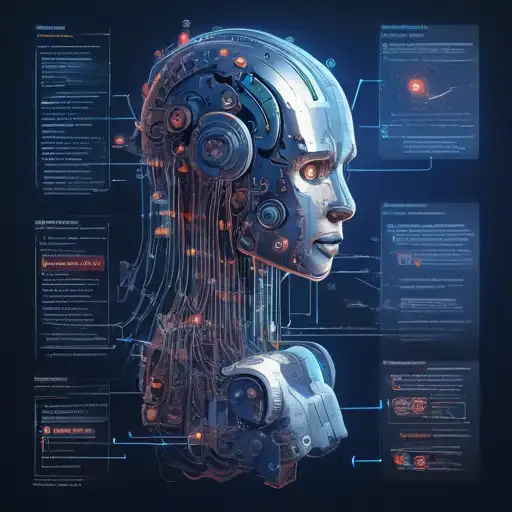Introduction to Machine Learning Algorithms
Machine learning algorithms are the backbone of artificial intelligence, enabling computers to learn from and make decisions based on data. For beginners, understanding these algorithms can seem daunting, but with the right approach, it's entirely achievable. This guide will walk you through the basics of machine learning algorithms, their types, and how they're applied in real-world scenarios.
Types of Machine Learning Algorithms
There are several types of machine learning algorithms, each suited for different kinds of tasks. Here's a brief overview:
- Supervised Learning: Algorithms learn from labeled training data, helping to predict outcomes for unforeseen data.
- Unsupervised Learning: Algorithms identify patterns in data without any labels, useful for clustering and association tasks.
- Reinforcement Learning: Algorithms learn by interacting with an environment, using feedback from their own actions and experiences.
Popular Machine Learning Algorithms Explained
Let's delve into some of the most popular machine learning algorithms that beginners should know:
- Linear Regression: A supervised learning algorithm used for predicting a continuous outcome based on one or more predictor variables.
- Decision Trees: These are versatile algorithms used for both classification and regression tasks, modeling decisions and their possible consequences.
- K-Means Clustering: An unsupervised learning algorithm that groups data into clusters based on similarity.
- Neural Networks: Inspired by the human brain, these algorithms are used for complex tasks like image and speech recognition.
How to Choose the Right Algorithm
Selecting the right machine learning algorithm depends on several factors, including the size and nature of your data, the problem you're trying to solve, and the computational resources available. Here are some tips:
- Start with simpler algorithms to establish a baseline.
- Consider the nature of your problem (classification, regression, clustering).
- Take into account the quality and quantity of your data.
Applications of Machine Learning Algorithms
Machine learning algorithms are everywhere, from recommending products on e-commerce sites to detecting fraudulent transactions. Here are a few applications:
- Healthcare: Predicting disease outbreaks and personalizing treatment plans.
- Finance: Algorithmic trading and credit scoring.
- Retail: Customer segmentation and inventory management.
Getting Started with Machine Learning
For beginners eager to dive into machine learning, here are some steps to get started:
- Learn the basics of programming, preferably in Python or R.
- Understand the fundamentals of statistics and probability.
- Experiment with small datasets and simple algorithms.
- Join online communities and forums to learn from others.
Machine learning is a fascinating field with endless possibilities. By understanding the basics of machine learning algorithms, you're taking the first step towards unlocking the potential of AI. For more insights into data science and artificial intelligence, explore our related articles.
